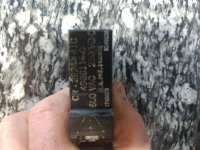Ok, its been a few years since I restored this lathe and i forgot much of what i knew. Lathe started going wonky. Tripped breaker in dc panel. I reset it and it would run for about thirty seconds then kick out again. Started getting worse and would not reset. Would run if I manually press contact in. Then got really weird and when i tried to change speed would stop and go in reverse without touching anything else and forward contact stayed engaged. Turned on motor generator today and it smoked the breaker.Where can I get a new breaker? Any help would be much appreciated. Unfortunately I am not an electrical wizard. Thank you.






Last edited by a moderator:

